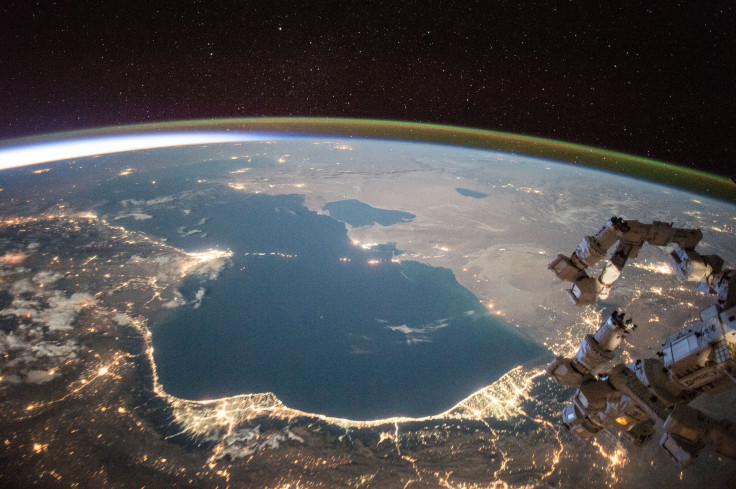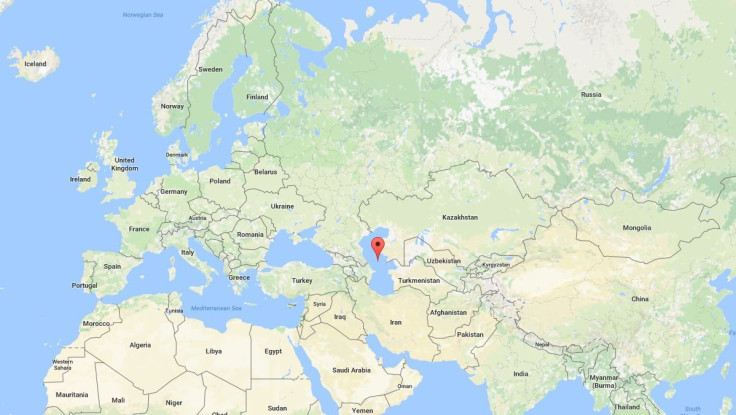Caspian Sea: Earth’s Largest Lake Evaporating Away As Temperatures Rise

The world’s largest inland body of water has been evaporating over the last couple of decades, with the sea level changing by several feet as surface temperatures have increased.
After a century of stable water levels, the Caspian Sea has been seriously fluctuating, researchers note in a study in the journal Geophysical Research Letters. In the last 20 years, it has dropped about 5 feet. And it may only get worse.
An increase in evaporation in the Caspian Sea “is closely related to surface temperature increases,” according to the authors. “With continued warming in the northern hemisphere, one can expect yearly accumulated evaporation rates over the Caspian Sea to continue increasing for the foreseeable future.”
That stable century before the sea’s fluctuations began spanned a time when the area was mostly “preindustrial,” the study explains. But the water dropped by about 10 feet between the 1930s and the 1970s, and then jumped up about 8 feet between the ‘70s and the ‘90s, before beginning another steady decline that has lasted until today.
During this steady decline, which saw the sea lose 3 inches of water each year from 1996 to 2015, the average surface temperature there also increased by almost 2 degrees Fahrenheit, the American Geophysical Union said in a statement about the research.
“The real control that causes it to go up and down over long periods of time is really most likely the evaporation, which is almost completely dominated by temperature,” study co-author and geophysicist Clark Wilson said in the AGU report.
The Caspian Sea is Earth’s largest inland body of water, with a surface area of more than 140,000 square miles and stretching almost 750 miles from north to south. It borders Russia, Azerbaijan, Iran, Turkmenistan and Kazakhstan.
This body of water is enclosed and that adds to the problem. The study says being enclosed means its water level “is particularly sensitive to any imbalance between the inflow and outflow,” in which the inflow is precipitation and runoff from rivers like the Volga River in Russia and the outflow is evaporation.
In recent years, that imbalance has grown: “Over the past decade, increased evaporation rates over the Caspian Sea associated with increased surface air temperature and other changing climate factors (such surface humidity and wind) cannot be balanced by the precipitation and river discharge.”

As the Caspian Sea water disappears, it threatens the wildlife there as well as surrounding economies. According to the AGU, nearby fisheries rely on the Caspian and it contains oil and natural gas reserves.
The lowest recorded level in the Caspian Sea was 95 feet below sea level in the late 1970s and, if nothing changes, the sea may dip to that level or ever surpass this historic low.
In the northern part of the water there are many parts that are shallower than 16 feet. The AGU says at the current evaporation rate, “it would take around 75 years for the northern part of the sea to disappear.”
The researchers plan to use climate models to predict how the Caspian Sea will change in the future.
“If you’re going to take this to the next step, it would be to take a suite of climate models or look at some sort of ensemble predictions of future temperatures to get some idea of what those scenarios might be for the Caspian Sea,” Wilson said. “You can imagine if you had a continued decline in sea level that led to several meters of loss, you’ve considerably diminished the size of the sea.
© Copyright IBTimes 2024. All rights reserved.





















